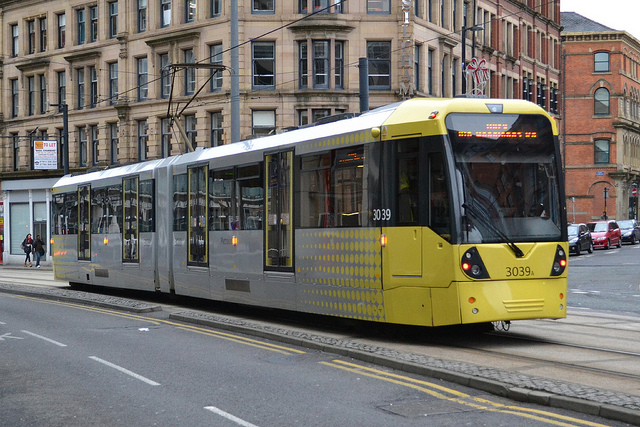“Today’s local communities are strongest when they enable all, diverse citizens to participate socially, economically and politically. These inclusive communities have better health, improved economic development, stronger political institutions and more effective public services. One in 5 of us is living with a health condition or disability. Economic recovery and social well-being cannot happen without inclusion.”
Hold on a second, this sounds like ‘dementia friendly communities’ doesn’t it? It’s actually the beginning of the description of ‘inclusive communities‘ on the Disability Rights UK webpage.
The most parsimonious explanation for the word ‘friendly’ in “dementia friendly communities” is that dementia friendly communities accommodate the idea of ‘friends’ – people who are sympathetic to what dementia is (or what the dementias are), and have a basic understanding enough to encourage more inclusion.
It is, of course, possible to have leaders without followers, as such. In that sense, can you have ‘dementia friendly communities’ without friends? In a way, the discussion is somewhat academic, in that the UK through various converging means has achieved an ‘ambition’ of one million friends by the intended time (March 2015). It, in a sense, depends on whether you define ‘friends’ in UK as people who’ve done the ‘Dementia Friends’ programme in some form; or whether they are sympathetic to the aims of the programme, raising awareness of dementia and turning communication into action, through some other way.
Why do we need a million people, or more, to be “friendly”? As Helga Rohra remarks, “why don’t we treat everyone with respect?” Respect, as Kate Swaffer observes, should mean “real respect” about seeing the person living with dementia, not simply the symptoms. But taking it literally – one supposes that “dementia friendly communities” are communities, howeverso defined as a street, an entire village or whole city, which has achieved ‘dementia friendliness’, such as dementia-friendly buses, dementia-friendly buses, or dementia-friendly banks.
And, in this transactional society as a whole, “dementia friendly communities” can be postulated to have a number of beneficiaries, the recipients of friendliness, the people being friendly, and possibly the people promoting the idea (including charities). I published my blogpost “It’s time we talked about ‘dementia friendly communities'” in March 2014, and I don’t think my views have fundamentally changed since then. At the time, indeed, I referred to ‘inclusive communities’.
The problem is: I can still be friendly to you even if I strongly dislike you. More’s the point, I can be friendly without being inclusive. ‘Inclusive’ better reflects intergenerational aspects of the dialogue about living with dementia, and the issue that people living with dementia have different living well, timely diagnosis and service provision needs. It also reflects that people living with dementia are often living with a plethora of medical issues, e.g. arthritis, which might also limit their involvement with the community e.g. taking a bus.
It’s possible to have friendliness even in face of outright division and opposition. And it is possible to take friendliness to an extreme, encouraging a sense of victimhood within a person who happens to have received a diagnosis of dementia.
Helga Rohra, a leading campaigner living with lewy Body dementia, in her plenary for the ADI conference last week, remarked to a small ripple of spontaneous applause, “I do not want to be a victim of dementia, but I want to be a victor of dementia.”
My thoughts on this converged after the recent Alzheimer’s Disease International (ADI) conference last week, where I asked Chris Roberts’ daughter whether she felt the word describing a community’s attitude towards Chris, should be “friendly”. She paused, and said, “No”. And this matters hugely – as when a person is diagnosed with dementia, invariably the diagnosis affects the friends and that family of that person. That person is at that point at risk of social isolation, which any policy of ‘friendliness’ must mitigate against as one of its key aims.
I asked Chris. Chris too said “no”. I then asked Chris what might be a better word, and he suggested “inclusive”. I further asked Kate Swaffer, and she said “accessible”.
And “inclusive” and “accessible” are certainly constructs which go together happily, for example in the field of urban design of built environments, or ease of shopping or use of transport. Chris Roberts, Helga Rohra and Kate Swaffer had both referred to their lived experience post diagnosis of dementia last week. They all independently described their wish to be included in every conversation.
Dr Jess Baker included the term ‘inclusive dementia-friendly communities’, raising the possibility that dementia friendly communities could theoretically be non-inclusive.
Both inclusivity and accessibility both promote a sense of identity of the person accepted by the immediate world around him or her, and promote autonomy and dignity. People who have received the diagnosis of dementia are still the same persons they were before their diagnoses. ‘Alice’ is ‘Still Alice’ for example. Younger people who’ve received a diagnosis need to be kept fully integrated in society, including employment if so desired, shifting the debate from “cost” and “burden” to “value”; with coherent pathways of care and/or support.
Are we in a better place than previous to where we were before the 2012 UK Prime Minister’s Dementia Challenge, as regards the ‘consumer experience’ of those living with dementia? I think the answer is almost certainly yes, though one would have to ask the various consumer groups around the world. We need to keep momentum up, and make sure that we do not retreat from the massive progress which has been made.
I feel now there has been a critical momentum building up, and now is the right time to crystallise “dementia friendly communities” as “dementia inclusive communities”.
Dementia Alliance International provides “a unified voice of strength, advocacy and support in the fight for individual autonomy and improved quality of life”. Kate Swaffer, Co-Chair of the Dementia Alliance International, a large international group of people living with dementia, working now closely with Alzheimer’s Disease International to give people with dementia an enhanced platform, further emphasised the need for rehabilitation for people living with dementia. Such a perspective necessitates viewing dementia as a ‘disAbility’ (dementia fulfills the definition of disability in international law); the counterfactual therefore needs to be enabling of people with dementia through the dementia inclusive community.
The current legal frameworks in England for equality (2010) and human rights (2010), both internationally and nationally, pre-existed the UK Prime Minister’s Dementia Challenge (2012) by only a few years. The ‘genie is out of the bottle’, I feel, making it very difficult to backtrack on this seismic shift in policy. As Glenn Rees, now Chair of the ADI says, policy is strongest which evidence is blended with the actual views and commitment of consumers.
Possibly dementia is now reaching a place where sex equality and disability were, but I feel the term ‘dementia friendly community’ is rather anaemic in the absence of a legal underpinning.
But how will know whether ‘dementia inclusive communities’ are getting anywhere? We will see more signs of inclusivity and accessibility, say in banks, transport or the built environment. Less easy to define is when societal attitudes have changed. Standards such as the recent British kitemark for dementia friendly communities help to deter people who can say ‘job done’ with a ‘dementia friendly’ sticker.
Although a right to offend is legally possible, anti-segregation has been quite possible to legislate upon. Changes in South African law made Apartheid impossible, whatever the current opinions of people living today. At worst, I’ve heard a handful of people living with dementia describing their experience of society’s attitude towards them as ‘social apartheid’, and this separation is easier to maintain with demonising terms in reference to dementia.
That’s why we do need media guidelines for the general media, in talking about dementia. That’s why we do need to recognise the diversity of all people living with dementia in public. And we do need to see them included at the very highest levels of policy even, not simply in a tokenistic way.
As Kate Swaffer said last week at the ADI Conference, “It’s going to take a lot of courage for us to work together.” Indeed, Kate at the 2015 ADI conference advised a few key steps in establishing dementia inclusive commitments, such as raising education, promoting volunteering, advancement of dementia advisory groups and local dementia action alliances, and meaningful engagement of people living with dementia; and for this all to happen from the very first step.
All this, of course, is not to poo-poo the massive achievements that have been achieved so far, not least in the progress of the Dementia Alliance International’, but we are – regrettably – ‘not there yet’.




